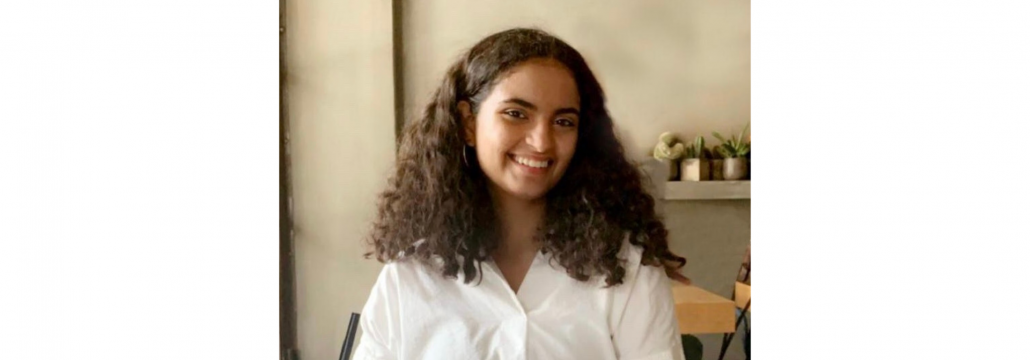Sarah Alkidim
Meet UCLA senior, Sarah Alkidim, who is majoring in Physics, with minors in Environmental Engineering and Mathematics. Sarah recently published a paper titled, “Distribution of microplastics in soil and freshwater environments: Global analysis and framework for transport modeling” in Environmental Pollution.
Sarah is a part of Dr. Sanjay Mohanty’s SEALab (Subsurface Engineering & Analysis Lab) in the Department of Civil and Environmental Engineering.
How did you first get involved in your research project?
During my sophomore year, I took my first environmental engineering class and loved it. It took me a couple of months to build up the courage, but I eventually emailed my professor asking if there were any positions for undergraduates open at his lab. At first, I got no reply. This is fine; professors are very busy! I waited a few more months and emailed again, this time getting the opportunity to meet with graduate students at Professor Sanjay Mohanty’s SEALab (Subsurface Engineering & Analysis Lab). After a couple of weeks rotating with graduate students during fall of my junior year, I was directed to a new project that was picking up because it was where I was needed most. I’ve been working with this group ever since on microplastics, which are plastics typically less than 5 mm in size. Lab work focused on quantifying the vertical transport of microplastics through soil, and through this I learned useful lab techniques related to designing and setting up such an experiment. On the other hand, my remote work collecting and analyzing data with my group culminated in a global review of the occurrence and transport of microplastics in terrestrial environments.
How would you describe your research experience at UCLA?
I felt my work was halted by the COVID-19 pandemic, as most other people might feel as well. Because of these exceptional circumstances, research has been conducted remotely since March 2020. Nonetheless, I feel fortunate to be working with a group that has helped me develop both inside and outside the lab. Writing, reading, and presenting scientific work are all vital parts of successful research and communication, and these are all skills that I have gained at SEALab. In addition, I now have a community of mentors and peers that offer support and value me and my work. Though I don’t have any previous experience to compare to, this was more than I had envisioned for my undergraduate experience at UCLA.
What is one piece of advice you have for other students thinking about getting involved in research?
In my experience, there can be too much pressure on undergraduates to successfully get into research as soon as possible. I personally had no idea undergraduate research opportunities even existed! My advice would be to go easy on yourself. Take your time and find your interests–these might change as you take more classes. Don’t be afraid to figure it out by reaching out to graduate students or professors from classes to talk about their research! I definitely think I would have benefited more if I had done that. One more piece of advice is try to not be discouraged if you don’t find any opportunities that interest you right away; keep looking for people who can help you, and keep exploring.
What are your future career goals?
Although my research thus far has been in the field of environmental engineering, I am looking to continue my education and research within the realms of physics. More specifically, I want to explore condensed matter physics and am interested in both theoretical and experimental research. One possibility I am considering is focusing on the intersection of fundamental physics and sustainability. I also really enjoy teaching, so these two things have led me to apply for graduate programs in physics.




